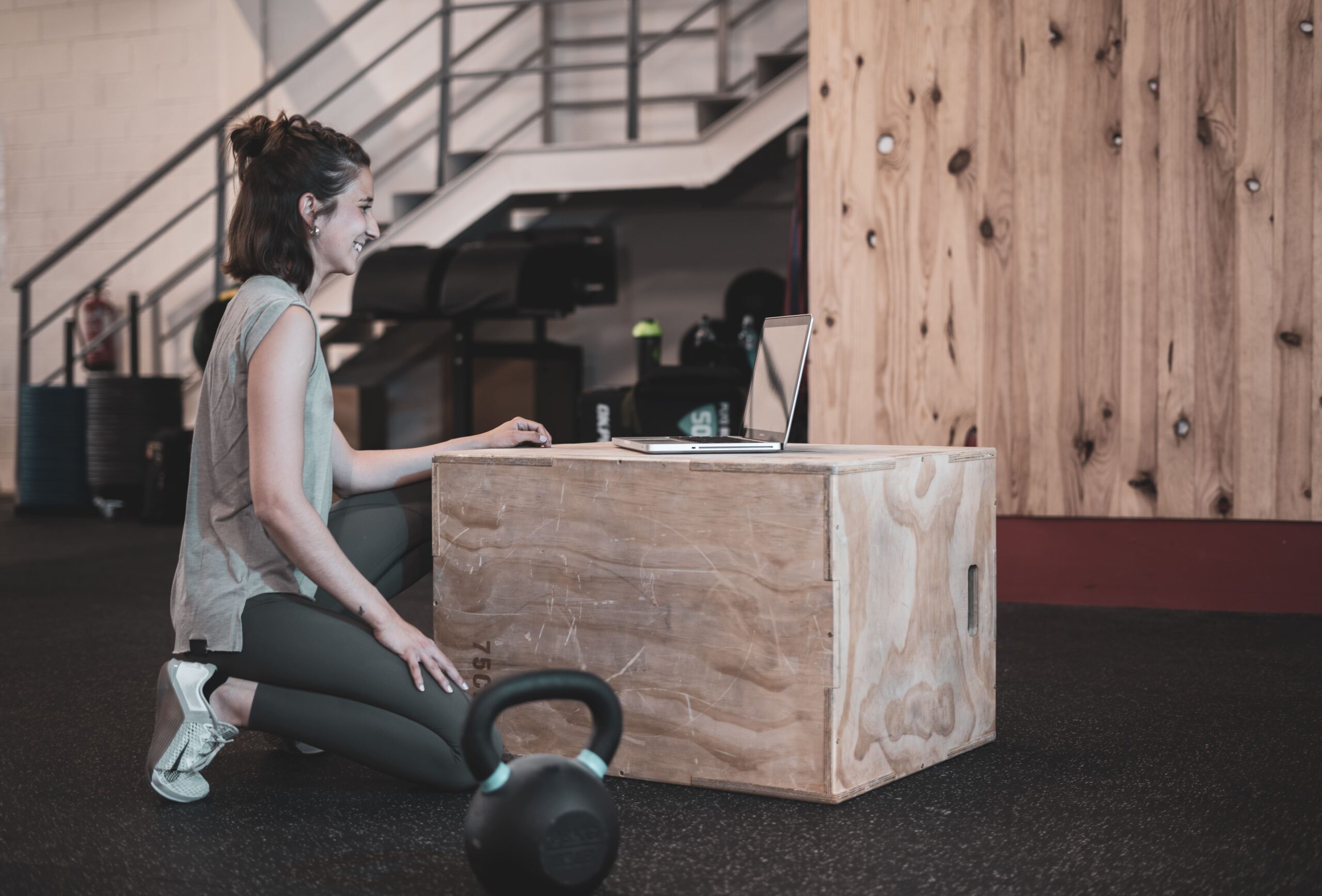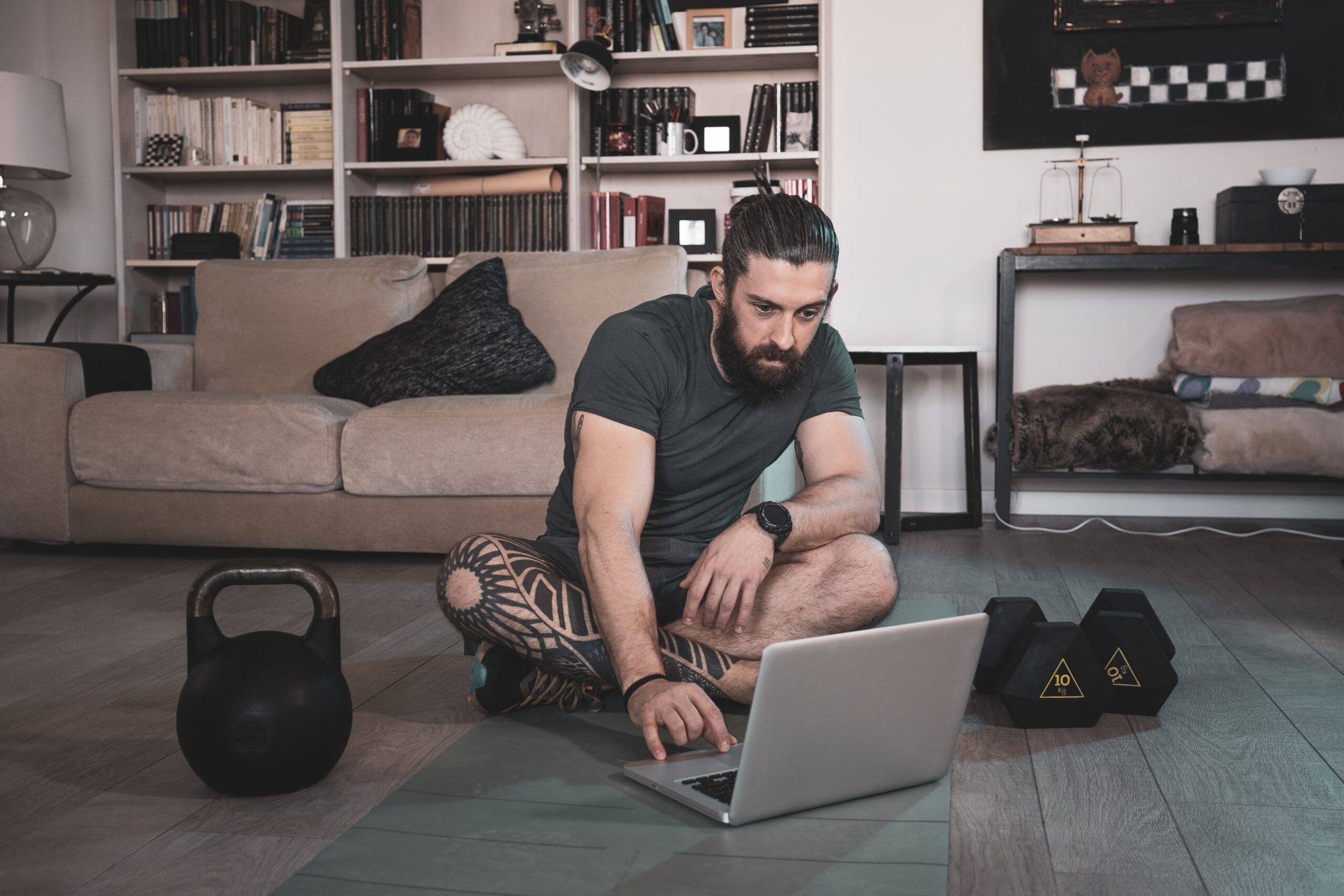Discover the key movements every coach must master to improve their clients’ mobility, strength, and overall performance. Learn how to apply them with purpose, adapt them to different levels, and avoid the most common mistakes.
1. What Are Functional Exercises and Why Are They Essential in Modern Fitness?
Functional exercises are not a passing trend — they represent an evolution in how we understand movement. Unlike traditional exercises that isolate muscle groups, functional exercises engage multiple joints and muscle chains, mimicking real-life or sport-specific movement patterns.
It’s not just about looking good, but about moving better. That means squatting properly, lifting safely, stabilising the core while running, or reacting quickly when falling. This holistic approach makes functional exercises a valuable tool for both athletic performance and postural health.
They are also highly adaptable: from sedentary individuals to elite athletes, everyone can benefit — as long as the exercise is scaled correctly.
To explore the principles and wide-ranging applications of functional exercises, refer to this comprehensive guide by the American Council on Exercise (ACE).
2. Real-World Benefits: From the Gym to Everyday Life
A common mistake is to reduce functional exercises to trendy or exotic movements. In reality, what makes them functional is not their novelty, but their real-life transferability.
When a client improves their balance while walking with a heavy rucksack or gains stability climbing stairs, they are experiencing the practical benefits of well-structured functional work. In the gym, this translates to cleaner lifting technique, fewer injuries, and more efficient movement.
From a therapeutic standpoint, these exercises help correct muscle imbalances, prevent lower back pain, and improve motor control, especially in older adults. For athletes, they enhance intermuscular coordination, power, and agility — all vital for performance.
In 2025, functional exercises continue to lead fitness trends, thanks to their broad adaptability and relevance in both sporting and everyday contexts.
3. How Should a Coach Select the Most Effective Functional Exercises?
A good functional coach doesn’t choose exercises at random, nor do they just copy the latest routine seen on Instagram. Every movement must answer a clear question:
What am I training this for?
The best functional exercises are those that:
-
Involve multiple joints simultaneously
-
Engage both prime movers and stabiliser muscles
-
Require control, not just raw strength
-
Can be progressed or adapted to suit the client’s level
-
Have a clear, practical purpose
Also, an exercise is not functional by itself — it becomes functional when it serves a purpose within the context of training. That’s why it’s essential to truly know the client: their goals, limitations, and movement patterns.
If you’re looking for ideas to build complete and coherent routines, we explain how to design functional exercise programmes in a gym environment, factoring in progression, client profiles, and the intent behind each movement.
4. Complete Guide to the 10 Essential Functional Exercises
Below is a list of 10 key exercises, with full descriptions to help coaches and clients understand how to apply them correctly.
1. Kettlebell Swing
This exercise is the very definition of functional power. It uses explosive hip extension to drive the kettlebell forward, activating the core, glutes, and hamstrings.
Practical application: Improves speed and power in actions like running, jumping, or striking. Ideal for sports that rely on lower-body explosiveness.
Common mistakes: Using the arms instead of the hips, leaning back at the top, failing to brace the core.
How to adapt it: Beginners can start with dumbbells. For those with lower back issues, reduce the range of motion or begin with glute bridges.
2. Goblet Squat
One of the best ways to teach correct squat technique, especially to beginners. Holding the weight in front of the chest encourages an upright posture and constant core engagement.
Muscles worked: Quadriceps, glutes, abdominals, spinal erectors.
Practical application: Sitting down, standing up, lifting loads, climbing stairs.
Common mistakes: Knees collapsing inward, heels lifting, rounding the back.
Progressions: Add load or movement, move to front barbell squats, try unilateral variations.
3. Farmer’s Walk
As simple as it is effective. This involves walking while holding weights in both hands, activating stabiliser muscles in the core, shoulders, and back.
Functional benefit: Trains grip, posture, and trunk control. Reinforces the ability to carry and move heavy objects safely.
Common mistakes: Rounding the back, letting shoulders drop, taking unsteady steps.
Variations: Unilateral carry (suitcase walk), walking on tiptoes, adding stairs.
4. Dumbbell Deadlift
A more accessible version of the classic deadlift. It teaches lifting from the floor with proper technique, engaging the full posterior chain.
Muscles targeted: Glutes, hamstrings, lower back, traps, core.
Functional application: Lifting boxes, children, backpacks — anything that involves bending.
Common mistakes: Excessive knee bend, rounding the spine, lifting with the back instead of the hips.
Progressions: Barbell deadlift, sumo deadlift, single-leg versions.
5. Plank to Push-Up
This exercise combines two key elements: core stability (via the plank) and upper-body pushing strength (via the push-up). It’s ideal for working the trunk and upper body in one dynamic sequence.
Muscles involved: Deep core (transverse abdominis), chest, triceps, deltoids, glutes.
Functional application: Reinforces the ability to stabilise the body during pushing, climbing, crawling, or rotating. Useful for movements like getting off the floor or lifting forward-facing loads.
Common mistakes: Dropping the hips, excessive trunk rotation, poor hand placement (too far forward or outwards).
Scaling options: Beginners can start on their knees or use an elevated surface like a box or bench.
Coaching tip: Keeping the glutes activated throughout helps maintain hip alignment and reduces swaying.
6. Lunges
Lunges are among the most effective functional exercises for developing lower-body strength, balance, and stability. Because they are unilateral, they activate not only the main leg muscles but also core and hip stabilisers.
Muscles involved: Glutes, quadriceps, hamstrings, adductors, core.
Practical application: This movement pattern is essential for everyday and athletic actions like walking on uneven ground, climbing stairs, or stabilising while carrying asymmetrical loads.
Common mistakes:
-
Taking steps that are too short or too long, misaligning the knees
-
Losing upper body alignment and leaning forward
-
Dropping the back knee too fast without control
Modifications:
-
Reverse lunges to reduce pressure on the front knee
-
Lateral lunges to target frontal-plane mobility and stability
-
Add resistance with dumbbells or kettlebells for progressive overload
7. Med Ball Slams
A powerful energy-release movement that activates the entire body and helps unload accumulated tension. It works muscular chains explosively, from the feet to the hands, through the core.
Muscles worked: Deltoids, latissimus dorsi, obliques, abdominals, legs.
Functional application: Reinforces downward pulling movements and improves coordination between upper and lower body.
Common mistakes: Using only the arms (instead of generating power from the ground and hips), not bending the knees to pick up the ball, holding the breath.
Professional tip: Ideal as a warm-up activator or high-intensity phase in metabolic training (e.g. HIIT).
8. TRX Rows
An excellent alternative to barbell rows or pull-ups, especially useful for building upper-body strength without loading the spine. It also requires constant core engagement to maintain full-body alignment.
Muscles activated: Lats, rhomboids, traps, biceps, abdominals.
Functional application: Corrects postural imbalances, especially for clients who spend long hours sitting or with forward-rounded shoulders.
Common mistakes: Pulling with momentum instead of controlled strength, arching the lower back, cutting the range of motion short.
Progression: Adjust the body angle to increase difficulty or combine with weighted vest/TRX add-ons.
9. Core Twists with Resistance Band
This exercise focuses on torso rotation — a fundamental pattern that is often undertrained but crucial for spinal health and sports performance.
Muscles involved: Obliques, transverse abdominis, spinal erectors, glute stabilisers.
Purpose: Improves the ability to produce and resist rotation. Key for sports with twisting actions (tennis, golf, baseball) and daily life (e.g. turning to grab something or pushing heavy doors).
Common mistakes: Rotating with the arms instead of the torso, not stabilising the pelvis, moving too quickly and without control.
Recommendation: Use a medium-resistance band and ensure the feet are firmly anchored to avoid compensation.
10. Burpees
The infamous full-body exercise that combines strength, cardio, coordination, mobility, and explosiveness. Often dreaded, but highly effective when performed correctly.
Muscles worked: Chest, triceps, shoulders, abs, glutes, legs and the cardiovascular system.
Practical application: Great for improving response time, recovery speed, and overall conditioning.
Common mistakes: Going too fast without proper technique, collapsing to the ground, misaligning the back during the jump phase.
Modifications: For lower fitness levels, remove the jump and push-up, or break the movement down into steps with pauses.
5. Applying Functional Exercises Based on Client Profiles
The real power of functional exercises lies in their adaptability. Not every body needs the same thing, and people respond differently to training. Here’s how to apply these exercises strategically depending on the type of client or group you’re working with.
Functional Exercises for Complete Beginners
For someone who has never trained or has been inactive for a long time, the priority is not to “sweat at all costs”, but to relearn how to move. This involves teaching spatial awareness, understanding their centre of gravity, and correctly activating the core.
Main goal: motor re-education, activation of stabiliser muscles, improved joint mobility.
Recommendations:
-
Use low-impact exercises such as bodyweight squats, dowel deadlifts, static planks, and band rows
-
Avoid plyometric work until basic movement patterns are mastered
-
Prioritise quality over quantity or load
Functional Exercises for Older Adults or Those in Rehabilitation
In this case, functional exercises become a therapeutic tool. The aim is to preserve independence, prevent falls, and maintain the ability to carry out daily tasks safely.
Main goal: balance, functional strength, coordination, and mobility.
Recommendations:
-
Include single-leg stability exercises (e.g. lateral walks with resistance bands)
-
Train strength in short ranges, focusing on proper technique
-
Use supports or aids such as chairs, TRX or bands to ensure safety
And beyond the physical aspect, it’s important to remember that exercise also strengthens mental health — something especially crucial for vulnerable populations or those going through recovery.
Read more about how strength training supports mental wellbeing
Functional Exercises for Athletes or Experienced Trainees
Here, the goal shifts: it’s about optimising performance and correcting imbalances that could increase injury risk. Functional training becomes a strategic complement to their primary sport.
Main goal: athletic transfer, explosive strength, neuromuscular control.
Recommendations:
-
Use advanced variations like kettlebell snatches, single-leg squats, med ball throws, and loaded rotation work
-
Introduce functional protocols under fatigue to simulate competition-like demands
-
Track performance metrics: time, reps, speed, etc., to evaluate progress
6. How to Structure Functional Exercise Sessions with Purpose
Recommended structure for a functional training session:
Active warm-up (5–10 min): joint mobility, core activation, basic patterns like crawling or jumping jacks.
Technical block (10 min): instruction and practice of the day’s key movement, such as a deadlift or lunge.
Main block (15–25 min): functional circuit of 3 to 5 exercises, prioritising quality over quantity.
Explosive or metabolic finisher (5–10 min): high-intensity movements like burpees, med ball slams, or kettlebell swings at pace.
Cool-down and mobility (5 min): dynamic stretching, breathing exercises, nervous system regulation.
Key coaching insight:
It’s always better to finish a session with the client feeling successful and in control, rather than overly fatigued. Functional training should build the body, not break it down.
And if you work with groups or lead classes, you can apply these 32 strategies to boost motivation in functional training sessions—a great resource to help keep your clients committed and engaged over the long term.
7. Common (and Risky) Mistakes Made by Coaches and Clients
Even with the best intentions, it’s common to make mistakes in functional training that either reduce its effectiveness — or worse, put the client at risk. Here are the most relevant ones:
Confusing intensity with effectiveness
Just because a client is sweating heavily doesn’t mean they’re training effectively. Intensity must be aligned with the client’s goals and capabilities. A well-executed mobility drill can be far more valuable than a poorly designed, exhausting circuit.
Neglecting technique in complex movements
Exercises like swings, jumps, or loaded rotational work require technical control. Without proper instruction and supervision, they can lead to joint overload or injury.
Applying “viral” exercises without proper scaling
Not all exercises trending on social media are functional — or even safe. For example, doing TRX push-ups on a Swiss ball might look impressive, but often lacks a real purpose and carries unnecessary risk.
8. The Role of the Coach: More Than Correcting, Guiding with Intention
Functional exercises require more from a coach than simply counting reps. They demand good judgement, sharp observation, and the ability to adapt. There’s not a single “right” way to perform a functional exercise—there are correct ways for each individual, depending on their mobility, stability, injury history, and goals.
A good functional coach:
-
Observes movement patterns, not just muscles
-
Teaches from simple to complex, understanding and applying progressions
-
Corrects with purpose, explaining the “why” behind each adjustment
-
Motivates with emotional intelligence, adapting their message to the client’s personality
-
Constantly evaluates, recognising that the body changes daily
In this type of training, the coach is no longer just an instructor—they become a true educator of movement.
10. Frequently Asked Questions About Functional Exercises
Is functional training the same as strength training?
No. While they may include similar exercises, functional training focuses on improving the body’s ability to move efficiently in daily life or sport. Traditional strength training, on the other hand, is usually aimed at increasing maximum load or building muscle mass in isolation.
How many times a week should I do functional exercises?
It depends on the person’s level. Generally, 2 to 3 sessions per week are effective for creating adaptations without excessive fatigue. These sessions can be combined with mobility work, traditional strength training, or cardio.
Can I do functional exercises at home without equipment?
Yes. Many functional movements can be performed using bodyweight only: squats, planks, lunges, glute bridges, and balance drills. A TRX or resistance bands can greatly expand your options without taking up space.
👉 The Mayo Clinic offers a clear explanation of functional fitness at home and its benefits.
Can I use functional exercises for weight loss?
Definitely. If structured properly—with multi-joint movements, changes in tempo, and controlled rest periods—functional training can significantly increase energy expenditure and trigger a strong afterburn effect.
Is it suitable for people with injuries or chronic pain?
Yes, provided it’s supervised by a qualified professional. In fact, functional training has its roots in physiotherapy, which means it has many applications in rehabilitation settings.
How do I know if I’m progressing?
Progress can be seen in many ways: improved movement control, holding positions longer, better technique, ability to perform more complex variations, or handling more load—without pain or imbalance.
Moving with intelligence is training with purpose.
Functional exercise is far more than a collection of fancy names. It’s a philosophy based on conscious movement, physical efficiency, and the connection between body, mind and environment.
For a coach, mastering these movements isn’t about having a long list—it’s about knowing when, how and why to use each one.
And for anyone who trains, incorporating these movements is a way to respect your body, prepare it for real life, and stay active with safety and energy.
In the end, it’s not about doing more reps—it’s about moving better.


